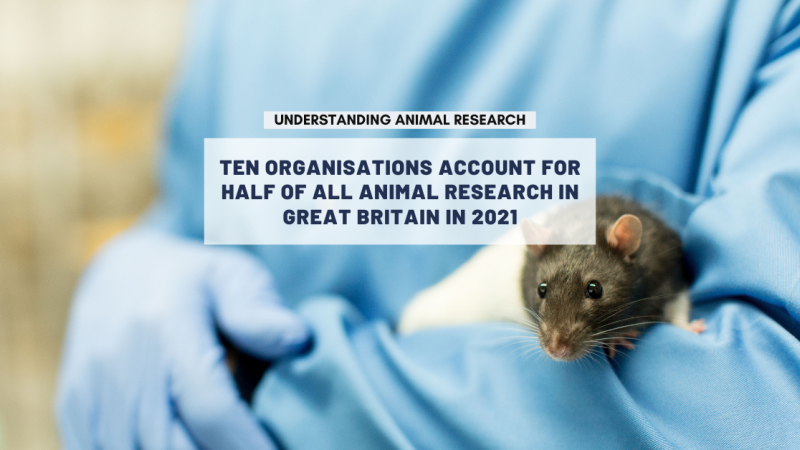
We were very sorry to hear that former Smiths frontman and animal rights campaigner Morrissey has been unwell recently. Morrissey was reported by the BBC to have received treatment for double pneumonia, a bleeding ulcer, and Barrett's oesophagus.
A passionate vegetarian and animal rights campaigner, Morrissey has in the past seemingly condoned the use of violence against animal researchers, on whom he is now dependent. “I understand why", he stated in 2007 "… so-called laboratory scientists are repaid with violence – it is because they deal in violence themselves and it's the only language they understand”.
Unfortunately for Morrissey, he now finds himself at a medical facility that itself conducts animal research, being treated with medicines and techniques developed using animal research.
From modern surgical techniques to the use of an intravenous fluid drip, even our understanding of stomach ulcers and acid reflux, animal models have played a crucial role in returning Morrissey to touring form, and we wish him a speedy recovery.
Barrett’s oesophagus
Barrett's oesophagus is a pre-cancerous condition where abnormal cells develop on the inner lining of the lower part of the oesophagus. This is usually caused by acid reflux, which damages the oesophageal lining. Symptoms include:
- Frequent and long-lasting heartburn
- Trouble swallowing
- Vomiting blood
- Upper abdominal pain
- Weight loss due to the pain of eating
Current treatments involve surgery to remove the abnormal cells, radiofrequency ablation, and early-stage trials in humans suggest that photodynamic therapy (PDT) may also work as an effective treatment.
- Radiofrequency ablation uses radio waves to kill a small area of tissue through burning. The first successful test was conducted in 1985 using a canine model and progressed to the first human trial in 1987. A quick browse of the scientific literature reveals ongoing research using pigs and cattle to devise new approaches.
- PDT relies on porphyrins: chemicals that turn toxic and kill diseased cells when exposed to light. The development of the technique has depended heavily upon animal research. For example, the earliest studies, conducted on rats in the 1920s, identified porphyrin compounds that accumulated in cancerous tumours and could be used to destroy them.
Thus far laboratory work for Barrett’s oesophagus has lagged behind that of other cancers because of the lack of a physiologically relevant laboratory model. However, in 2011 the University of Pennsylvania announced an $8 million initiative to study the condition and develop treatments using mouse models.
Bleeding ulcer
Peptic ulcers are caused by an infection of Helicobacter pylori, a bacterium first cultured from the stomachs of ulcer patients in by Robert Warren in 1982.
In 1984, studies that attempted to culture H. pylori in the stomachs of piglets led to no changes that were observable through biopsy. The experiment was considered a failure and never published. Because no suitable animal model was available, researcher Barry Marshall experimented on himself by drinking a live H. pylori culture.
Eight days after exposure he suffered severe inflammation in the stomach, demonstrating the link between the bacterium and peptic ulcers. Treatment with antibiotics eliminated the H. pylori infection. The Mongolian gerbil has now been established as a model for gastric inflammation, as it has an equivalent susceptibility to H. pylori infection as humans. Research using this model system is continuing, with a focus on the development of peptic cancers as a result of H. pylori infection.
Double pneumonia
Double pneumonia affects both lungs as opposed to just one. The treatment for pneumonia depends upon the trigger for the inflammation of lung tissue, which can be viral, bacterial, or the result of inhaling irritants. The nature of Morrissey’s pneumonia has not been disclosed, but all types of the disease are conventionally treated using medicines developed through animal research.
Simple analgesics, such as paracetamol, can prove effective in the treatment of all types of pneumonia. Research on albino rats, performed in the 1940s by David Lester and Leon Greenberg, ultimately led to the development of paracetamol as an effective, low toxicity painkiller.
Antibiotics and neuraminidase inhibitors can be used to improve outcomes in bacterial and viral pneumonia respectively.
“Protection” tests, in which half of a group of infected animals are treated with a potential drug, have been used extensively throughout the history and development of antibiotic treatments. For example, Howard Florey and Ernest Chain used eight mice in a protection test to determine the effectiveness of penicillin. This, and their subsequent work to refine and mass produce antibiotics, led to their being awarded the Nobel Prize in 1945.
Neuraminidase inhibitors are anti-viral drugs that target the influenza virus and have proven effective in treating viral pneumonia caused by the influenza virus. Ferrets have been widely used in the development and testing of oseltamivir (Tamiflu) and zanamivir, as they show similar influenza susceptibility and disease progression compared to humans.
Intravenous (IV) therapy
“And they tried to patch me together over the following five weeks, but it didn't quite work and I was on lots of IV drips for almost five weeks and each time it seemed like I was back to robust health I would go into decline so this is what happened with the festival this week”
This quotation from Morrissey appeared in The Daily Mail on 22nd March 2013.
Animal research played an important role in the earliest development of intravenous drips. IV therapy evolved from the earliest attempts to transfuse blood between humans, between animals, and animal-to-human. Christopher Wren, the architect of St. Paul’s Cathedral, conducted the first working IV infusion device in 1658 using a pig’s bladder and a quill. He instilled a mixture of wine, ale, opium, and liver antimony into the veins of a dog. As the dog in question dealt “remarkably well” with the procedure, it was subsequently used for other, similar tests of Wren’s apparatus.
Interesting drug
Scientists work hard to develop new and better treatments to alleviate human suffering. However the long periods of time between initial research and prescription drugs can sometimes make it hard to see the important role that animals have played. We wish Morrissey a speedy, and perhaps thought-provoking, recovery.
Last edited: 29 July 2022 14:26



